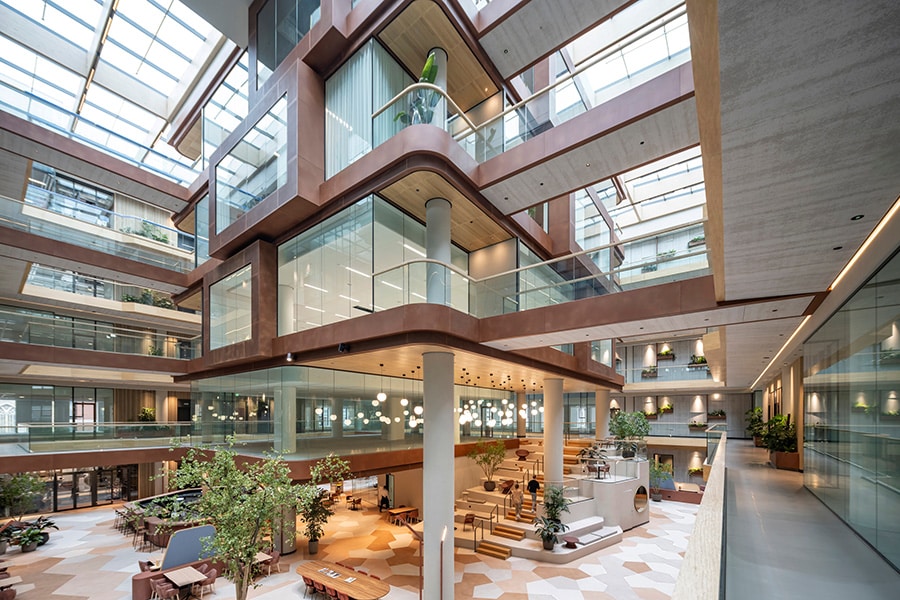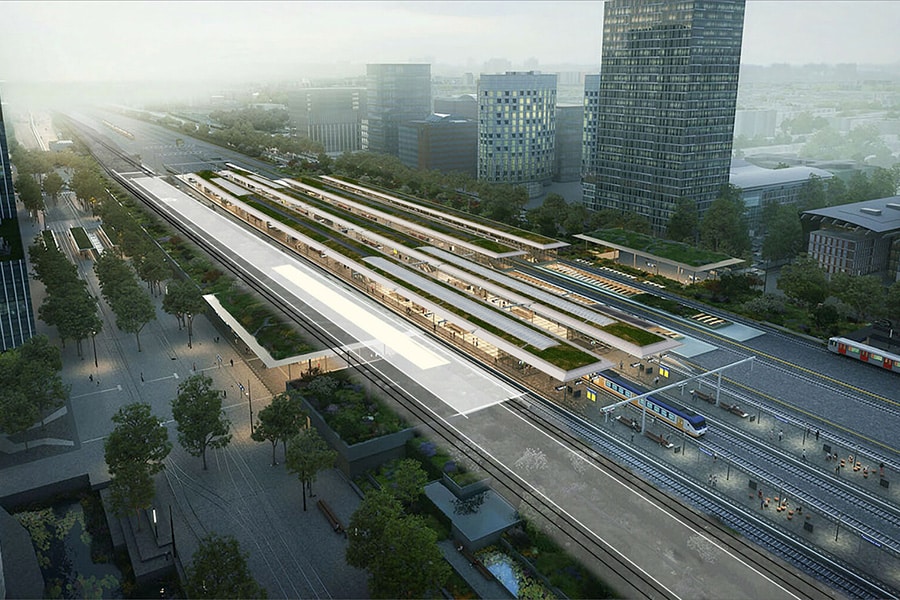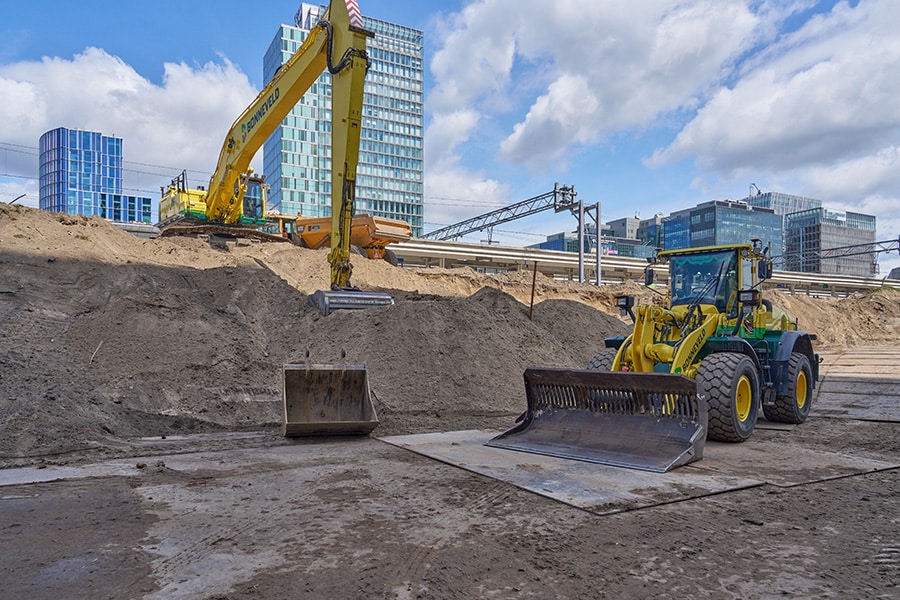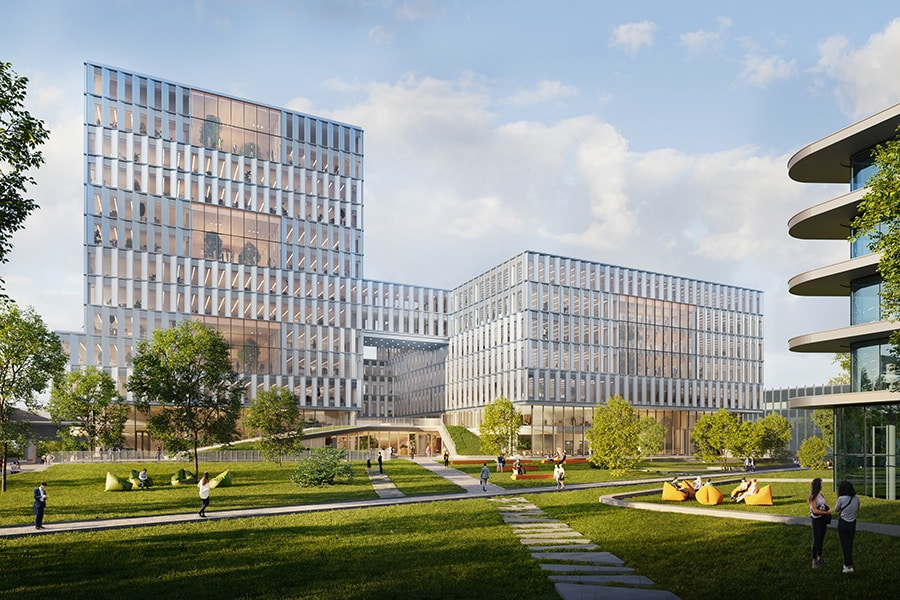
Up Mountain | Composite proves authenticity as balcony cladding
The expressive form of apartment building Up Mountain in Amstelveen is largely due to the large wrap-around balconies and terraces. The balcony edges, balcony ceilings and façade columns are made of composite. This relatively new material thus makes its calling card in the construction industry.
The balcony parts were developed and produced by Indupol International NV, a market leader in the manufacture of fiberglass-reinforced composite products in the automotive, railway and agricultural sectors. "Since about five years we are also active in construction," explains Werner Hulstaert of Indupol. "In this industry, we take a very selective approach. We prefer to work only on projects in which we can show the authenticity of composite. That's not so easy yet. Many construction companies still see composite as a replacement for another material."
Parameters
"We always check a construction project on three parameters," Hulstaert continues. "It must contain sufficient repetition, have a typical shape and it must benefit from the low deadweight of composite. Previous building projects that met these parameters are Sijthoff and Eurojust in The Hague. For both buildings we manufactured the cladding." Up Mountain's balcony cladding also meets the parameters. In particular, the low deadweight of the composite is important because the apartment building rests on the existing foundation of a parking garage.
Switch to composite
"The preliminary process of Up Mountain was quite exciting for us," says Hulstaert. "The design was originally conceived in architectural concrete, but that turned out to be too heavy. For the architect, it was quite a big switch to composite. The apartment building had to form a single entity with the parking garage below and the adjacent Hudson's Bay department store. The department store is done in architectural concrete and the composite had to match that in color and shape. Based on his confidence in us, the architect took the plunge. When he saw that composite was the best solution for his design, he got behind the product and the process gained momentum." The balcony elements are made in one piece as much as possible and have an indistinguishable concrete look. The elements receive a standard primer, followed by a base color that is slightly lighter than the existing concrete. On top of that, Indupol sprays reddish-brown speckles, which give the elements their vibrancy.
Plates and columns
The composite plates have large dimensions. To give them sufficient rigidity, they are constructed as a sandwich construction. This construction consists of an outer layer, with fiberglass-reinforced laminate underneath on which a 20 mm thick foam core is glued. The inside again consists of glass-fiber reinforced laminate. The façade columns are manufactured by Indupol from somewhat thicker single-shell laminate. These columns get their rigidity largely from their shape. They span two floors and are anchored on the mezzanine floor. Hulstaert: "The ceiling tiles and columns incorporate the rainwater drainage. Rainwater collects on the inside of the ceiling tile and flows from there, via a gutter, to the rainwater drain incorporated in the column. Through the column, the water flows into the standpipe."
Production started
The production of the flat ceiling tiles has started. For this, Indupol uses steel molds, one side of which has an adjustable angle. This way, Indupol can make different elements with one mold. "In total, we produce 2,200 m2 ceiling tile and 1,300 m2 to balcony edges," says Hulstaert. "We place these, at our own production site, in the steel frames of steel construction company Anton Staal. This creates ready-made balconies, which can be hoisted and anchored on site in one go." To manage the prefabrication, Indupol and Anton Staalbouw worked closely together. Both parties worked in one 3D model. They also jointly made a full-scale mock-up. Based on this, the design was optimized and put into production. "The next five months are entirely devoted to production and prefabrication," Hulstaert concludes. "From the end of June, the balconies will go to the construction site on demand, to be hoisted in just six to eight weeks."




